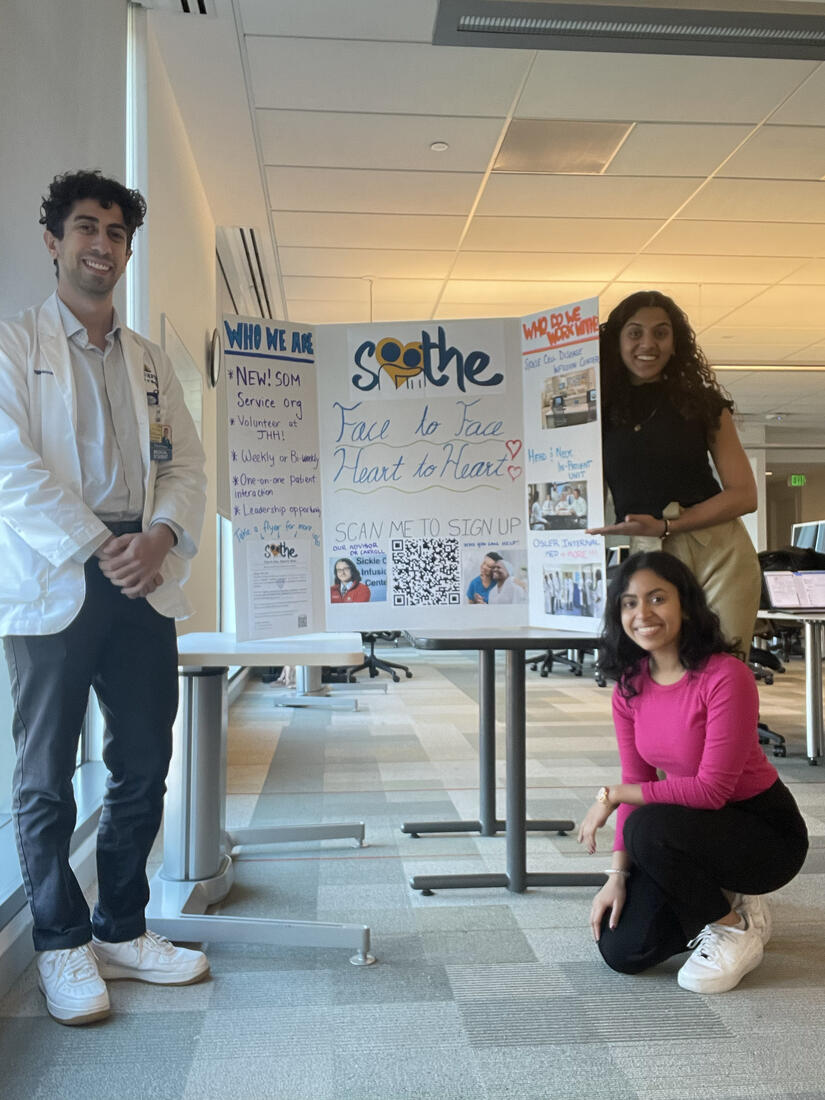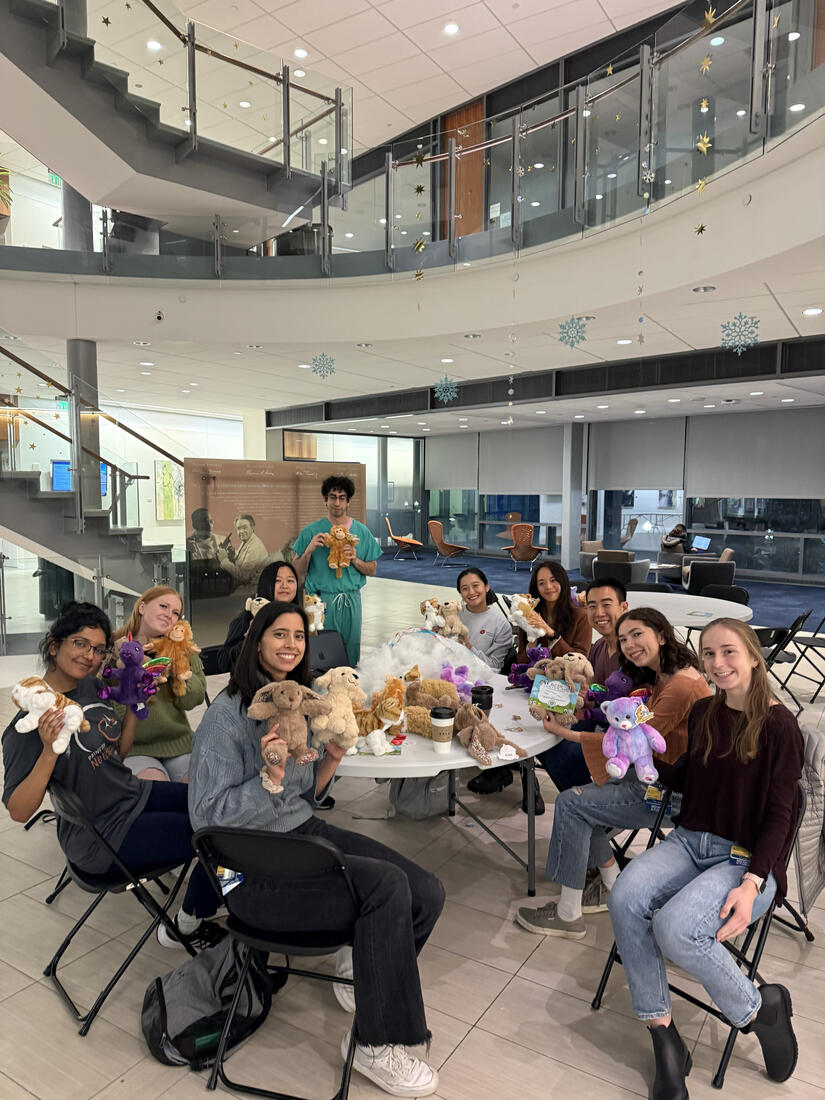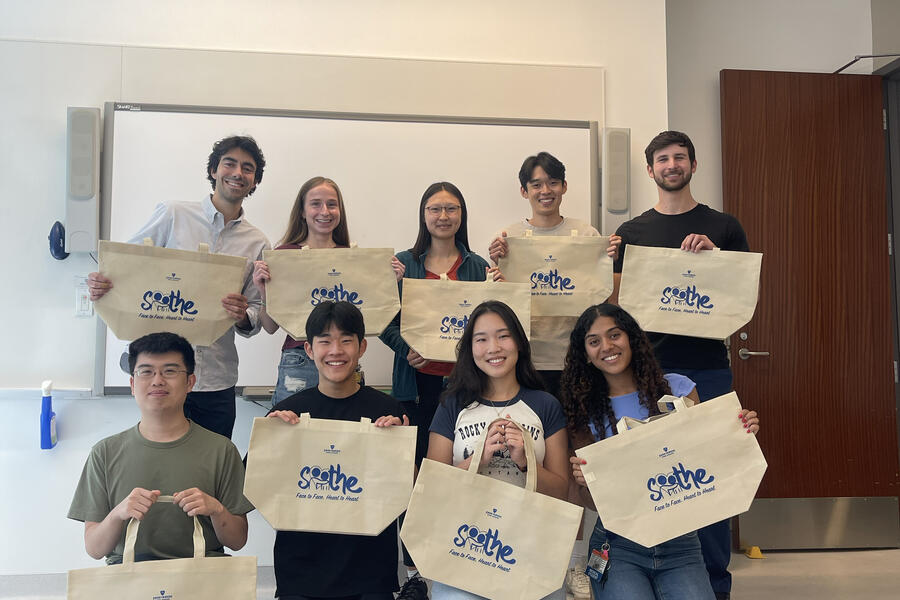On a recent visit to the Head and Neck Cancer In-Patient Unit at Johns Hopkins Hospital, Vikas Vattipally chatted with a patient about a range of topics: horseback riding, real estate, tuxedo cats, religion. What the third-year medical student did not discuss with the patient, an affable woman in her 70s, was why she lay in a hospital bed.
"We are not there to talk about the medical component," Vattipally says of his interactions through SOOTHE, a student-run volunteer organization at the school of medicine. "We try to talk about patient's lives outside the hospital and things they're passionate about."
SOOTHE (Students Offering Optimism to Help) hinges on the importance of casual conversation, sending medical students to more than six areas of the hospital to talk with patients at their bedsides. The benefits are twofold: Patients get comfort, company, and distraction from medical concerns, while the student volunteers experience the human side of medicine.
Third-year medical student Shreya Sriram founded SOOTHE in spring 2023, and she has since recruited more than 120 volunteers from the School of Medicine who have had more than 500 patient encounters. The program has also taken off with medical students at the Mayo Clinic, Harvard, and the University of Arizona, and SOOTHE is pursuing telemedicine ventures as well. Two Johns Hopkins physicians, head and neck surgical oncologist Christine Gourin and psychiatrist Pat Carroll, serve as faculty advisers, and all volunteers undergo a three-part training.

Image credit: Courtesy of Shreya Sriram
One inspiration for SOOTHE was Sriram's experience as a volunteer caller for a senior center during the pandemic, when she formed a special bond with one woman. "In the beginning it was me yapping, but she opened up, telling me about her upbringing in Jamaica and her daughter in Virginia."
A pain management course at Johns Hopkins further resonated with Sriram. "We learned that with enough emotional support, enough socialization, the burden of pain can actually be lessened," she says.
SOOTHE started in the Sickle Cell Disease Infusion Clinic before expanding to other hospital units, including the Chronic Pain Treatment Program and the Solid Tumor Oncology Unit. Nurses on the units help identify patients who would benefit from visits. "Some patients don't get visitors during the day, and this makes a difference," says nurse practitioner Carol Sallese Maragos, who works with volunteers in the head and neck unit.
A patient's verbal consent is required before a drop-in. Volunteer Allison Chen says one woman wanted company but didn't feel chatty, so Chen simply watched her play video games. Another time, with a non-verbal patient, Chen used a whiteboard to communicate. "What I always take forward," Chen says, "is how rich these patient's lives are and how many things matter to them outside their current treatment."
Volunteer Aidan Weitzner, who is studying chronic pain, says, "A lot of us were itching to be out there in a clinical setting, but also to get that foundation talking more casually with patients, instead of just being the medical provider giving information."
To contact SOOTHE, email SOOTHEOrg@jh.edu.

Image credit: Courtesy of Shreya Sriram
Posted in Health, Student Life
Tagged patient experience, graduate students








